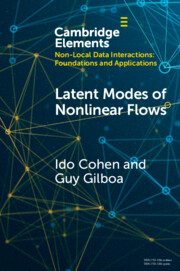Element contents
Latent Modes of Nonlinear Flows
Published online by Cambridge University Press: 31 May 2023
Summary
Keywords
- Type
- Element
- Information
- Online ISBN: 9781009323826Publisher: Cambridge University PressPrint publication: 29 June 2023
References
- 1
- Cited by



